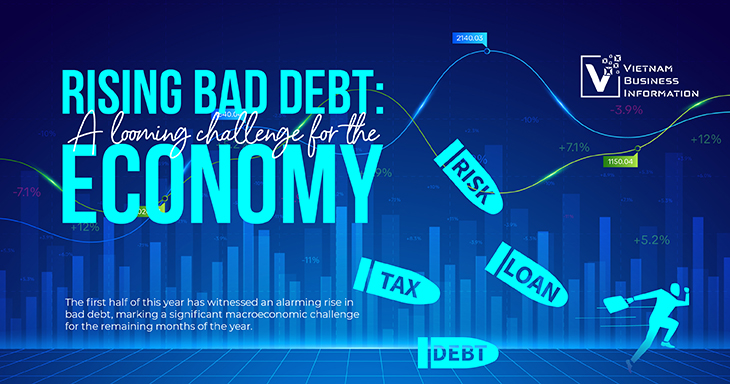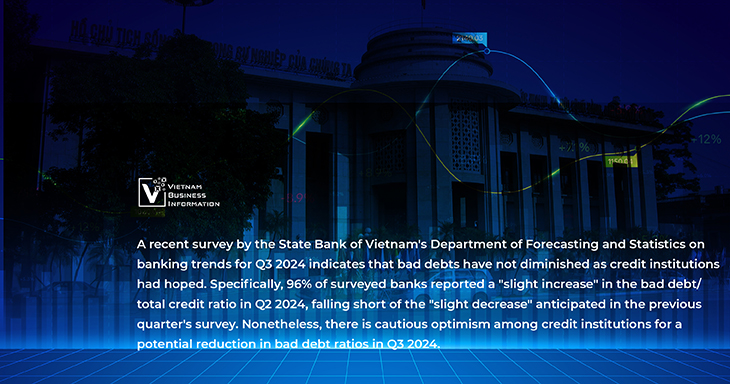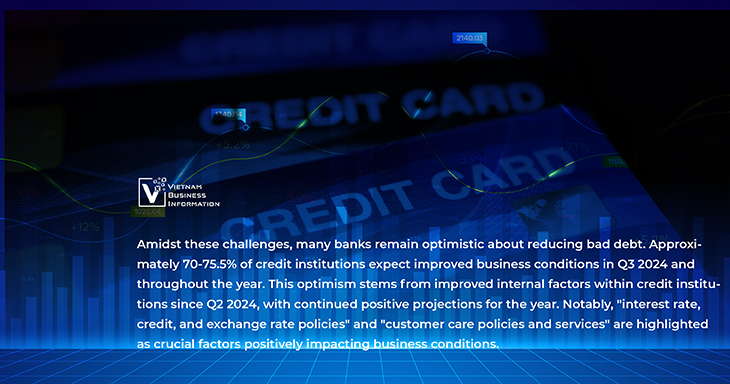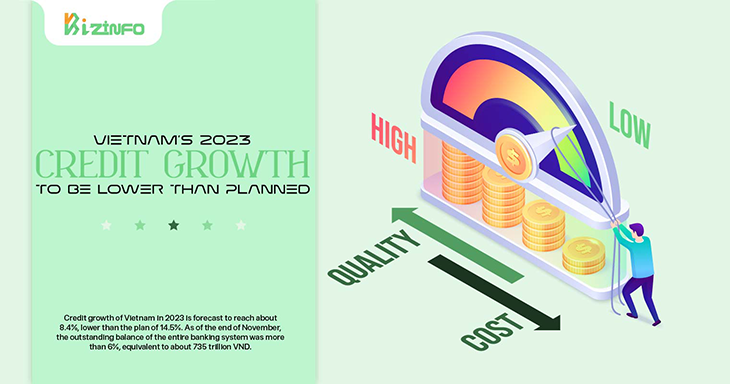Published Jul 2024
Rising bad debt: A looming challenge for the economy
The first half of this year has witnessed an alarming rise in bad debt, marking a significant macroeconomic challenge for the remaining months of the year.

Escalating bad debt
Financial reports for Q1 2024 from nearly 30 commercial banks reveal a stark picture of escalating bad debt. Total bad debt has surged to VND 224,146 billion, a more than 14% increase from the end of 2023. Notably, 26 out of 28 banks reported higher bad debt balances compared to the previous year.
A recent survey by the State Bank of Vietnam's Department of Forecasting and Statistics on banking trends for Q3 2024 indicates that bad debts have not diminished as credit institutions had hoped. Specifically, 96% of surveyed banks reported a "slight increase" in the bad debt/total credit ratio in Q2 2024, falling short of the "slight decrease" anticipated in the previous quarter's survey. Nonetheless, there is cautious optimism among credit institutions for a potential reduction in bad debt ratios in Q3 2024.

Economic experts express growing concern over the rising bad debt, considering it a critical factor influencing macroeconomic stability in the months ahead. Dr. Cấn Văn Lực, a noted economist, identifies bad debt as one of the primary risks and challenges facing the Vietnamese economy.
In the mid-year economic report and full-year forecast for 2024, Dr. Cấn Văn Lực and his team at the BIDV Training and Research Institute highlight the sluggish progress in economic restructuring, particularly among state-owned enterprises and weak credit institutions. The slow pace of restructuring, equitization, and divestment of state-owned enterprises, along with the delayed resolution of weak credit institutions due to complex procedures and asset valuation difficulties, exacerbates bad debt and hampers efficient resource allocation. The report stresses the need for more decisive actions to address these issues.
Dr. Cấn Văn Lực and his research team further emphasize that although bad debt and exchange rate increases are currently under control, they remain significant challenges. Data from the State Bank of Vietnam shows the on-balance-sheet bad debt ratio reached 4.93% by the end of April 2024, up from 4.55% at the end of 2023 and 2% at the end of 2022. The bad debt balance rose by 8.61% since the beginning of the year. Excluding the bad debt of the five credit institutions under special control, the on-balance-sheet bad debt ratio falls below 3%. Despite being manageable, this situation presents a formidable challenge, particularly with the 2024 Law on Credit Institutions limiting the rights of credit institutions to seize collateral for bad debts.
Banks remain optimistic
Amidst these challenges, many banks remain optimistic about reducing bad debt. Approximately 70-75.5% of credit institutions expect improved business conditions in Q3 2024 and throughout the year. This optimism stems from improved internal factors within credit institutions since Q2 2024, with continued positive projections for the year. Notably, "interest rate, credit, and exchange rate policies" and "customer care policies and services" are highlighted as crucial factors positively impacting business conditions.

Credit institutions also identify "the economy's demand for their products and services" as a key objective factor enhancing business conditions in Q2 2024. Looking ahead to the entire year, "the State Bank's credit, interest rate, and exchange rate policies" are anticipated to be the most significant factors driving improvements in business conditions. These elements are crucial for stabilizing bank growth and fostering momentum for reducing bad debt.
Source: Cong Thuong News
Compiled by Vietnam Business Information















